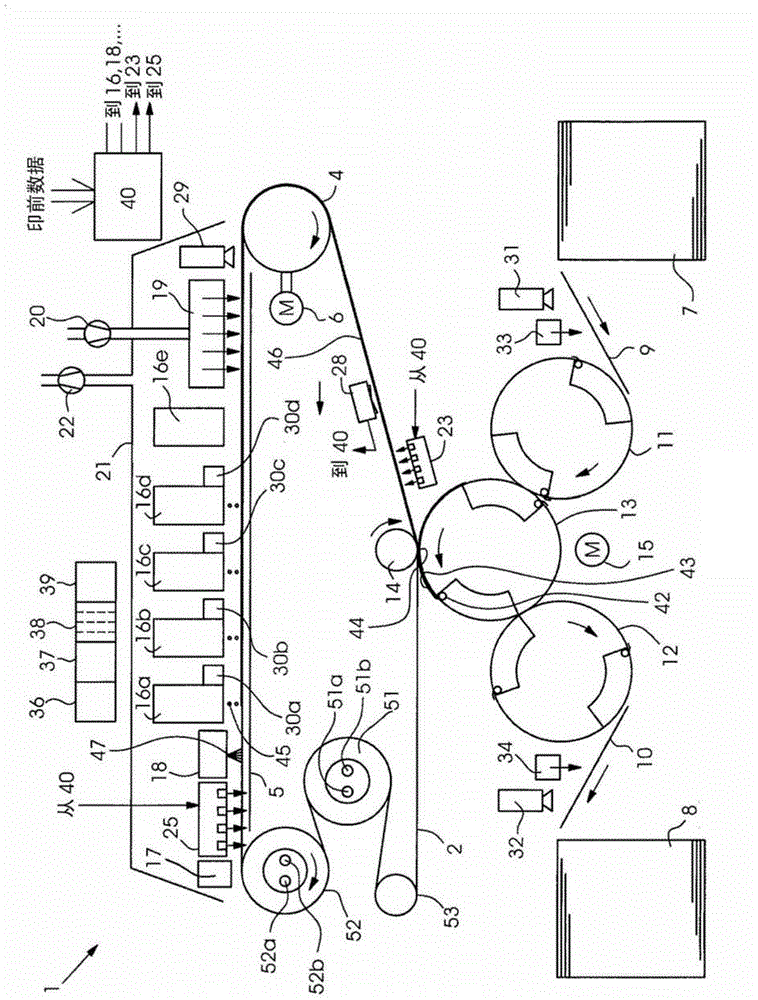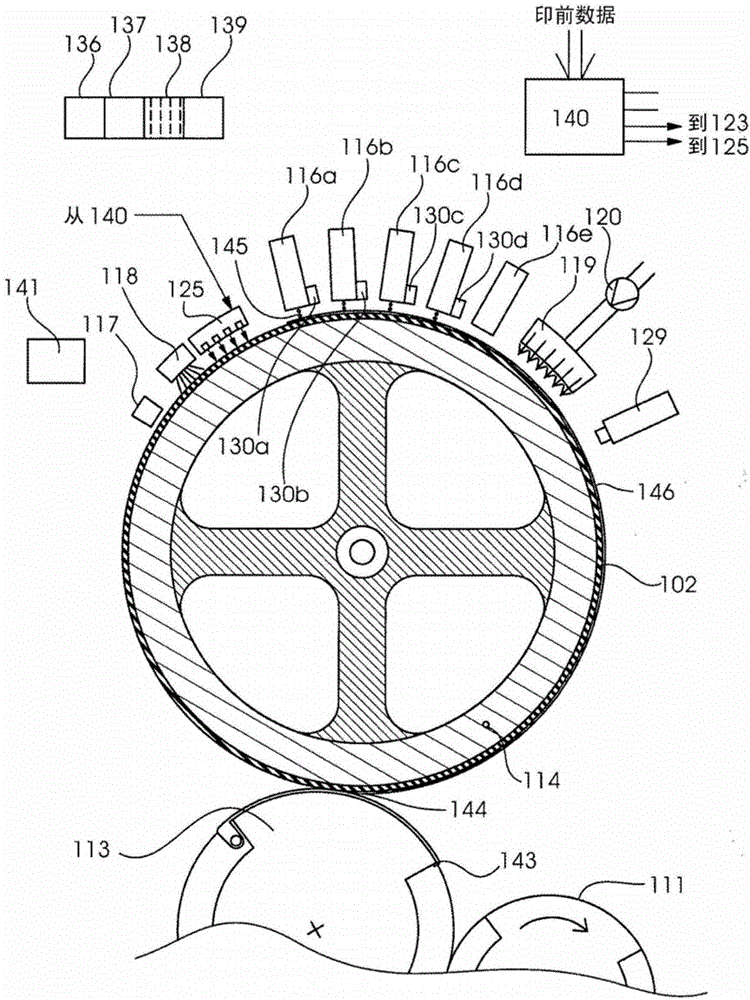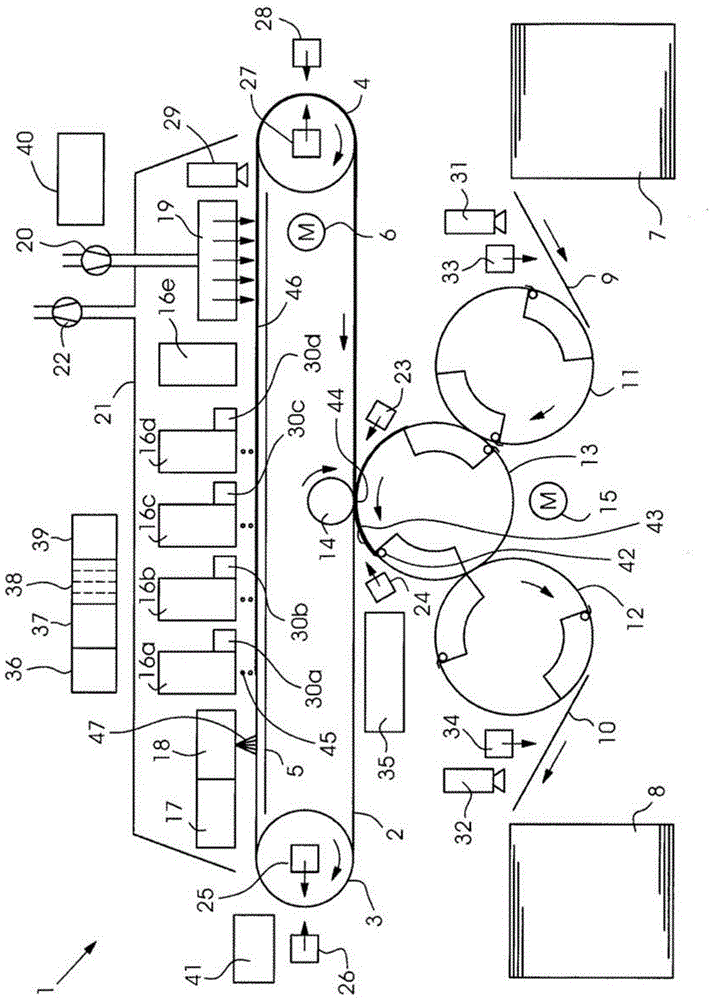Method for indirectly applying printing liquid to a printing substrate
A printing material and liquid technology, applied in printing, copying/marking methods, printing devices, etc., can solve the problems of printing ink detachment and transmission, and achieve the effect of improving detachment, strong fluidity, and detachment improvement
- Summary
- Abstract
- Description
- Claims
- Application Information
AI Technical Summary
Problems solved by technology
Method used
Image
Examples
example 1
[0128] A rubber belt is provided as intermediate carrier 2 , the structure of which is preferably comparable to that of offset blankets. An approximately 2 μm thick layer of TPnB (tripropylene glycol n-butyl ether, eg product tripropylene glycol butyl ether TPnB) is applied to the rubber belt by means of spray beams 18 . Water-based and binder-based inks are applied last.
example 2
[0130] A Teflon-coated conveyor belt is provided as intermediate carrier 2 . An approximately 4 μm thick layer of DPM is applied thereon as a separating layer (dipropylene glycol methyl ether, eg the product dipropylene glycol methyl ether DPM). The application can be effected by means of a roller system, in particular similar to an offset dampening device. A thin dispersed varnish layer of approximately 0.1 to approximately 1 μm is then applied, which is dried and then forms a skin on the DPM. A separate dryer can be provided for this purpose, in the figure 1 is not shown but can be placed directly behind the application device 18 . Water-based and binder-based inks, in particular so-called latex inks, are applied last.
example 3
[0132] A belt or a roller cover is used as intermediate carrier 2, the material of which is comparable to known offset blankets. A thin oil layer of approximately 0.1 to approximately 1 μm, in particular a vegetable oil such as sunflower oil, is applied as a separating layer to the intermediate carrier. Finally the organic solvent based ink is applied.
PUM
| Property | Measurement | Unit |
|---|---|---|
| Boiling point | aaaaa | aaaaa |
Abstract
Description
Claims
Application Information
 Login to View More
Login to View More - R&D
- Intellectual Property
- Life Sciences
- Materials
- Tech Scout
- Unparalleled Data Quality
- Higher Quality Content
- 60% Fewer Hallucinations
Browse by: Latest US Patents, China's latest patents, Technical Efficacy Thesaurus, Application Domain, Technology Topic, Popular Technical Reports.
© 2025 PatSnap. All rights reserved.Legal|Privacy policy|Modern Slavery Act Transparency Statement|Sitemap|About US| Contact US: help@patsnap.com



